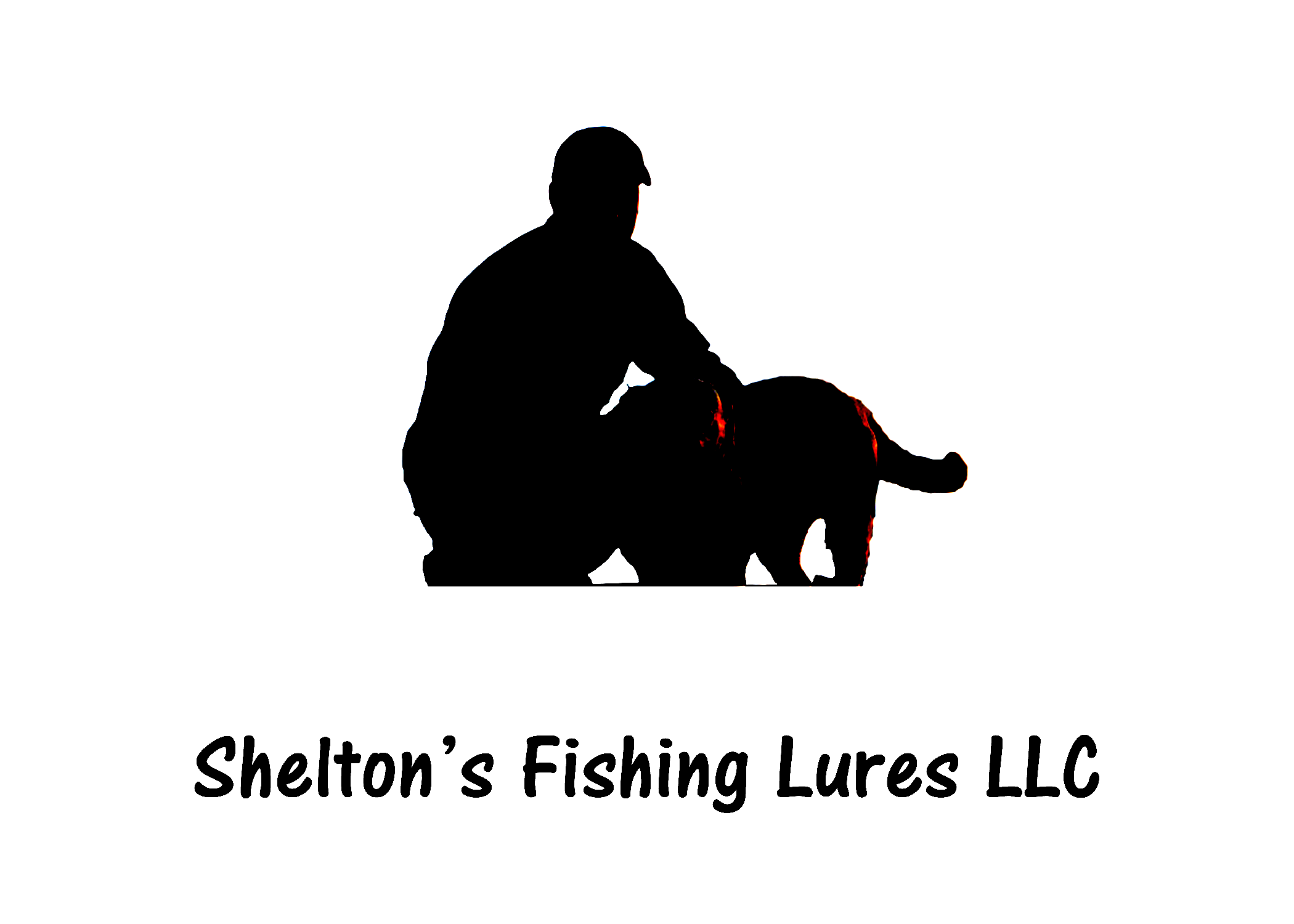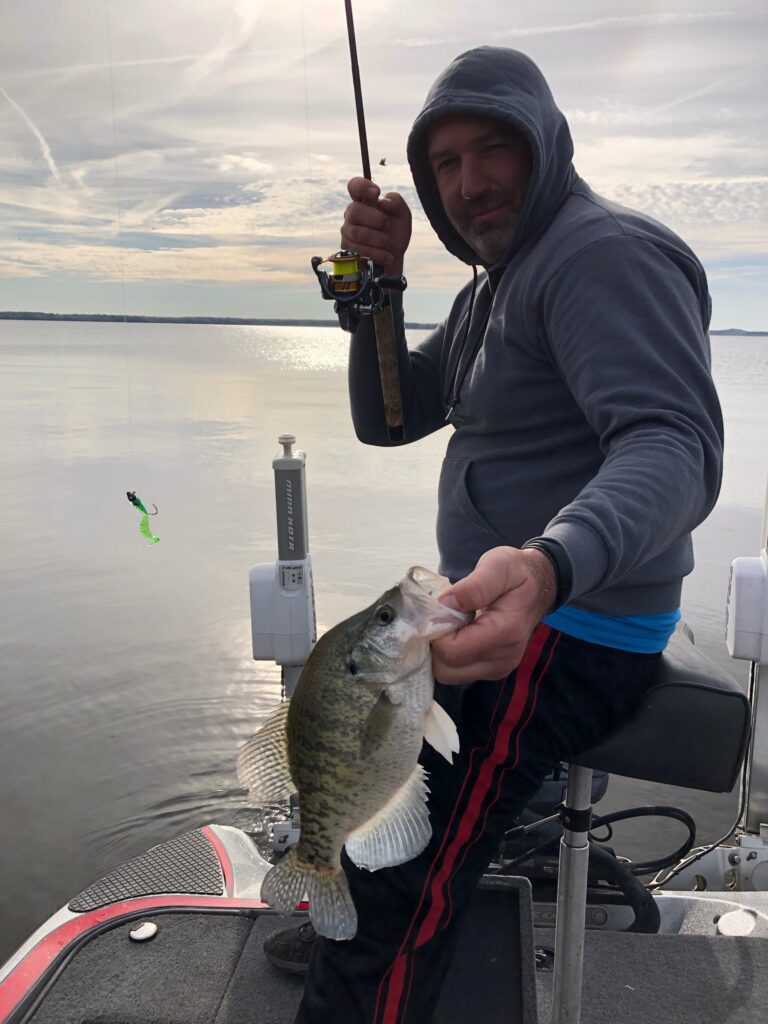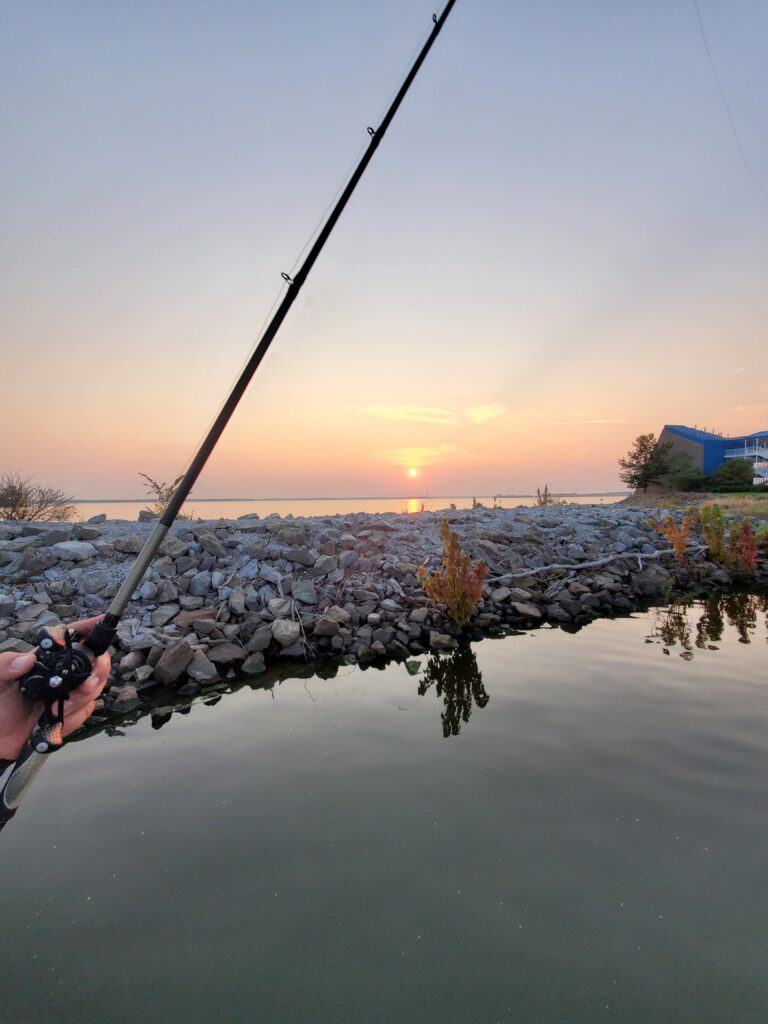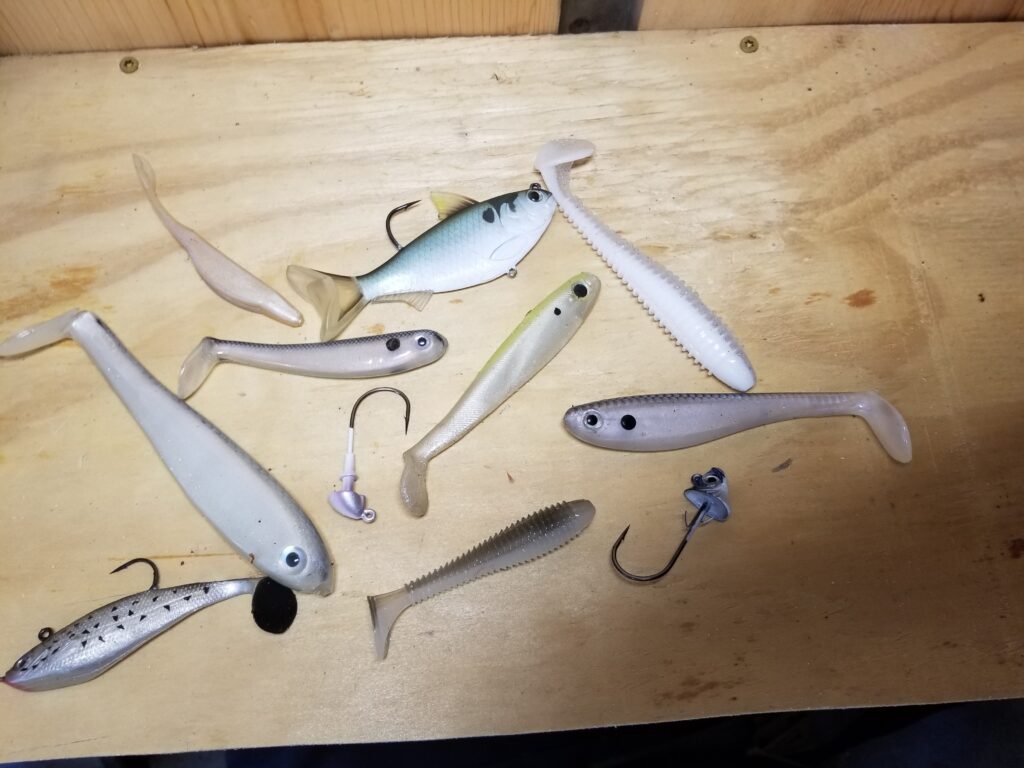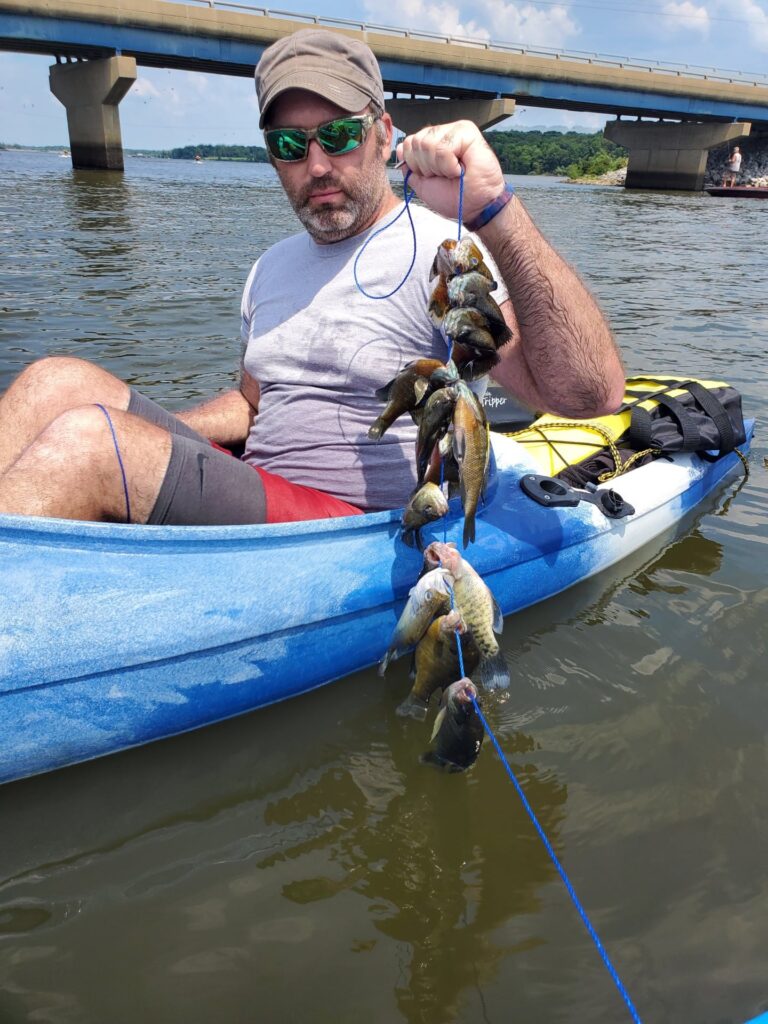Crappie, Tips and Tricks
The Complete Guide To Vertical Jigging For Crappie
Look out across any sizeable lake and rest assure there is someone out there fishing for crappie using the vertical jig method!
What Is Vertical Jigging?
In it’s most simple form, vertical jigging is the presentation of hanging a jig directly in the water from a depth range of only a few inches down to the bottom of the lake bed.
With the reel being used to set the primary depth and the rod providing the action and secondary depth, this rig is a staple that must be mastered to become a successful crappie fisherman.
Is Vertical Jigging A Viable Way To Catch Crappie?
In no uncertain terms, vertical jigging is the single most popular way to catch crappie today. lf you were to look out across a lake and see an angler seated in a boat parked out in the middle, odds are, they are vertical jigging over a piece of structure.
I would have to estimate that over 75% of all crappie harvested, come from vertical jigging!
A Deeper Dive Into Crappie Fishing Using A Vertical Jigging Method
Now with a basic understanding, I’ll cover my experiences using this rig, backed by math to help you optimize it. We will cover the following contents:
- Why Vertical Jigging Is The Most Popular Method
- Controlling depth With The Rod & Reel
- How To Work The Rig Properly
- What Lures Work Best For Vertical Jigging
- When Vertical Jigging Is Not Suited Under Some Conditions
- Tips To Take It To The Next Level
Grab a cup of coffee and strap in!
Why Vertical Jigging Is The Most Popular Method
Using this method it holds to an old adage… It takes a day to learn and a lifetime to master!
From what you’ve learned so far and from the image above alone you will likely be able to go out to a lake and catch a couple of fish, especially if they’re biting well that day but….
Vertical jigging takes skill…You have to maintain an effective depth while figuring out what mood the fish are in.
If you learn from a master jig fisherman, you will likely catch fish from the beginning but will also notice that inches away your teacher is out fishing you ten to one. As you add to your skillset the numbers will even back out but it won’t happen overnight!
There is also little upfront costs to fishing this way. A rod and reel, some light line, and a jig and you’re all set!
Controlling Your Depth
Vertical jigging gives you complete and total control of how deep your lure sits in the water column. For this example let’s say you’re fishing with a ten foot pole in eight feet of water and you want to only fish a foot off the bottom…
Simply lift your pole vertically and allow about six and a half feet, or roughly 75% of the poles distance worth of line out by opening up your reel.
This takes into consideration that you’re holding the pole comfortably about six inches above the surface.
Now if you begin catching fish at this depth you can remember exactly how deep you were.
Working The Rig Properly
Aside from winter, vertical jigging involves a lot of movement when trying to entice tasty crappie with the most common being a quick raise and drop that happens within a blink of an eye.
Pop the rod up lifting the jig about foot and let it fall back down to its original depth on slack line. If crappie are just sitting and looking at the bait this could be the exact trigger they need. Often times you’ll feel a thump within a couple of seconds of the jig settling!
You can also try to swim the jig in a discrete manner maintaining the same depth which wouldn’t be possible by any other method. Add the popping action intermittently to raise the odds of you raising a fish into the boat!
What Lures Work Best When Vertical Jigging
While most jigs will work well there is a top tier in my book
- Curly Tails (for advanced fishermen)
- Stinger Style Jigs
- Hair Jigs
- Tube Jigs
- Live Minnows
No matter what list I have developed over the decades of fishing I’ve done, always start with your confidence bait!
Jigs are cheap! Don’t give up until you’ve tried them all!
When It’s Time To Try A Different Rig!
Up until now I’ve only spoken of the good but, I’ll admit that there’s a handful of times that vertical jigging is completely useless.
First off, I do not fish vertically in clear water and especially SHALLOW CLEAR WATER!
Unless you’re fishing in water deeper than 30ft or it’s a cloudy day, I will not risk hoovering over fish in my boat because casting a shadow over them tends to make them either leave or dig in deeper to the structure they’re holding on.
The second reason I will avoid vertical jigging is when fish are in shallower water around three feet or less and fishing from a boat.
Electronics, phones, and livewells emit noise and vibrations that drive fish into lockdown mode or completely away.
If I’m wading or in a kayak you can still try it and experience success.
Tips To Take It To The Next Level
The following tips are brought to you by long days on the water with few and far bites in between. They’ve been the difference in going home or going home with dinner!
It may be tough to visualize these tips for a beginner but as you learn and grow you’ll likely develop your own ways of making stingy fish bite and the following will be easier to implement.
1.) Do The Dying Minnow Dive
This is my number one fish catching method when the fish won’t bite. I never fully understood its effectiveness until a few trips of using Livescope.
I will first lower my jig down to the area where I believe the crappie are holding and keep it still for about ten seconds. Then I will begin raising the bait slowly away from the structure which will usually pull a curious fish or two up with it. Once I’ve risen the bait about three feet I will instantly let the bait fall on a slack line. This creates a dying minnow effect that can cause crappie to crush your bait!
Use A Pendulum Retrieve
The pendulum retrieve is one of the most difficult but effective ways I’ve found to catch fish. Like a pendulum on a clock arm swinging back and forth, the retrieve follows the same premise.
Set the depth that you wish to reach the fish on your rod then swing your bait out in front of where you wish the bait to hold. Holding the rod at ten o’clock as the bait sinks it will actually swim back to you until reaching its resting place. Fish will often follow the bait and ambush it when it comes to rest!
This retrieve works incredibly well with dock shooting but is a go to for me in shallow water, especially stumps.
The two methods above combined with a curly tail grub will catch fish when other methods completely fail and is why the Shelton’s Curly Tail Grub lands at number one on my list.
Freeze Your Bait In Winter
I don’t mean stick it in the deep freeze to create some special effect but the exact opposite. You place your jig about a foot off the bottom and leave it there holding it as still as humanly possible.
Crappie expect to see bait in a dormant faze so a minnow that’s sitting still looks like an easy meal to grab. The best crappie fishermen know that you have to keep your bait frozen. It’s times like this that a small bucktail jig will pay big dividends!
Here’s A Tip, It’s Called A Minnow
In summer time crappie of size become much harder to catch when the sun gets up high. It’s times like these when guides and pro’s alike will take a jig and tip it with a minnow. The larger bait profile draws in slabs looking for a big meal to justify its spent energy!
Conclusion
Vertical jigging is the primary presentation used by crappie anglers and now you know why! Time tested and true but like any great approach it can be tweaked to increase your odds of more fish catches. Use the tips above on those especially hard days and you’re sure to have trips where you’re the envy of the boat ramp!
If you learned something today and would like more tips like this, please read my slip corking for crappie post!
